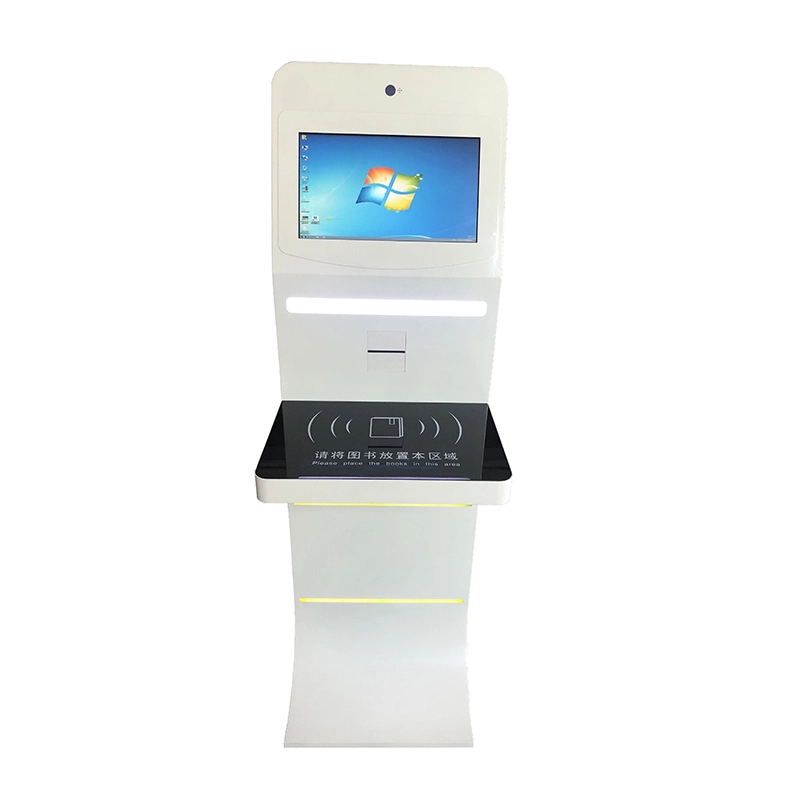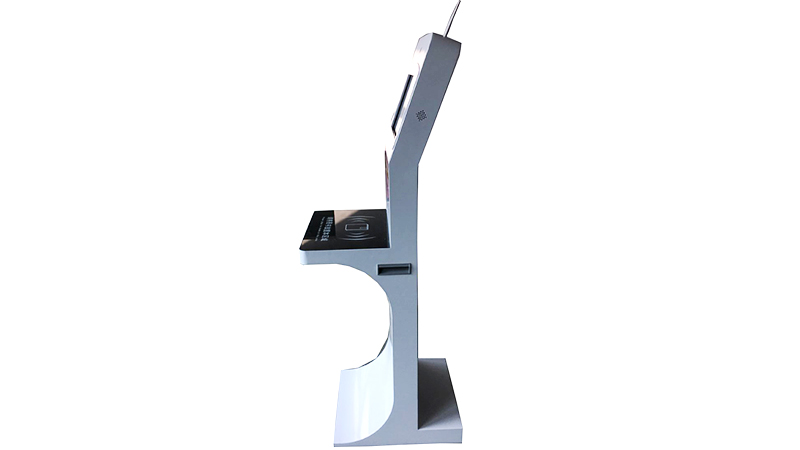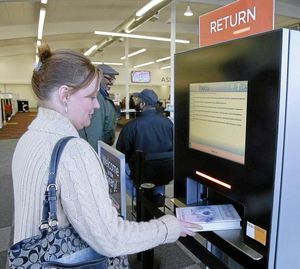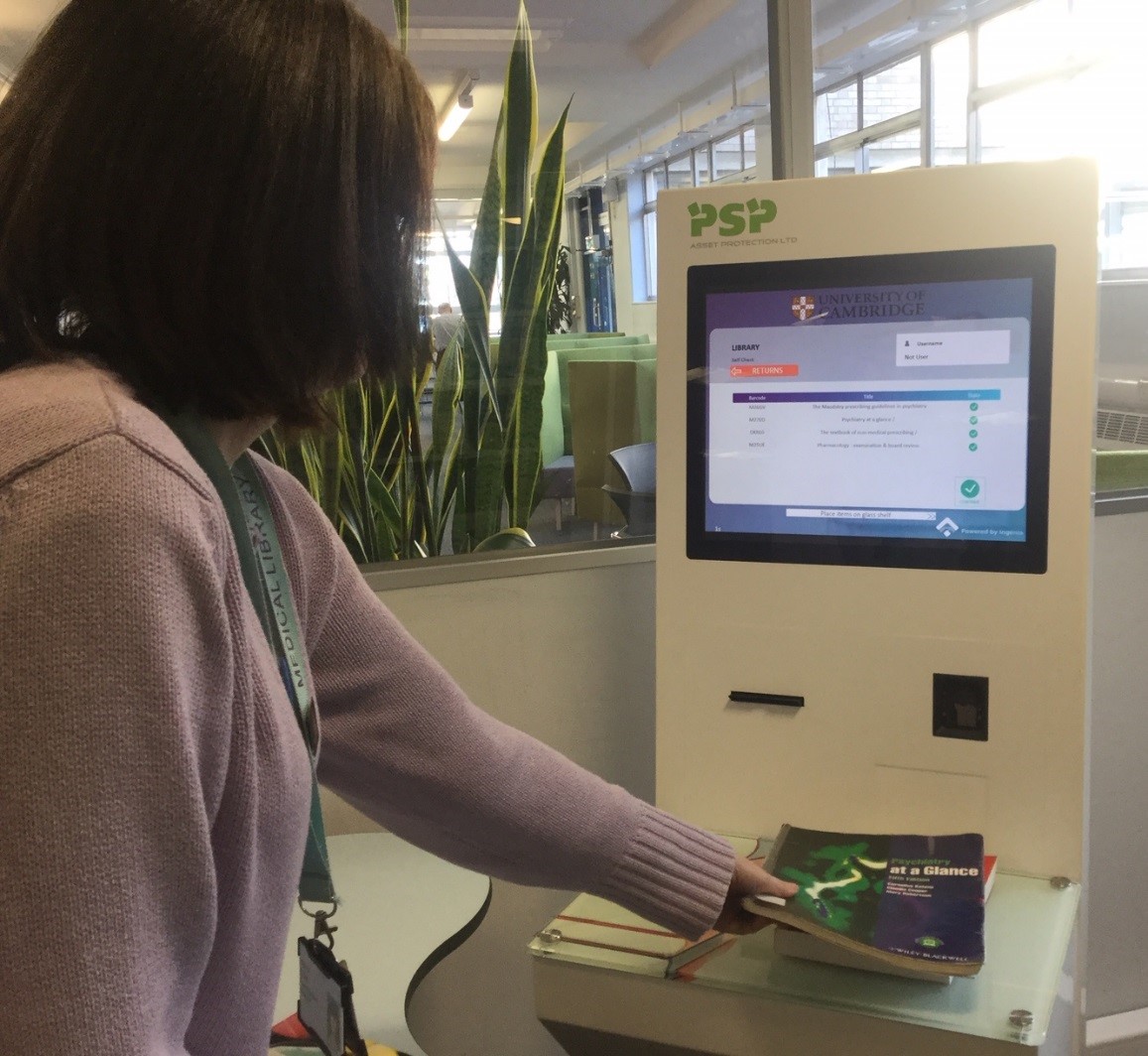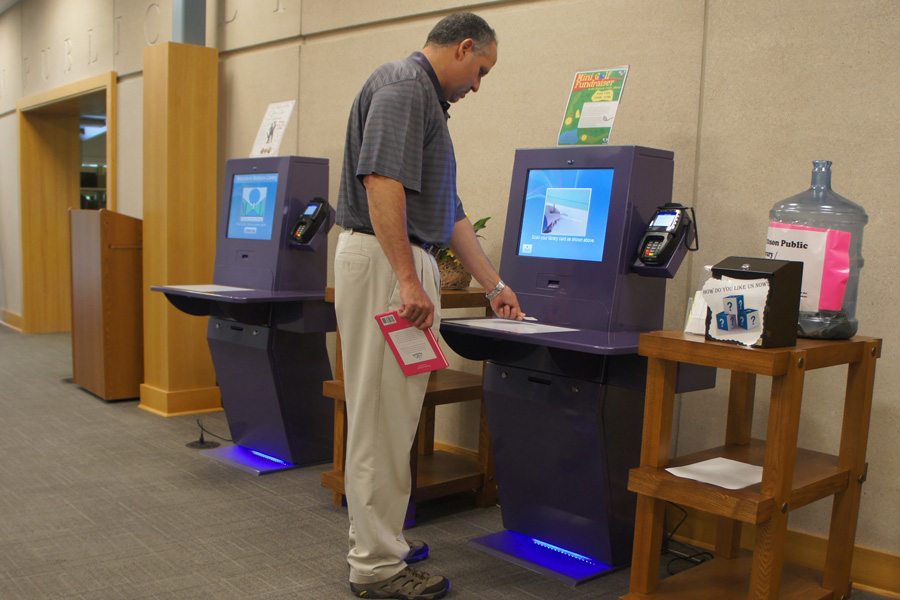| No. | Component | Brand | Specification |
| 1 | Industrial PC | Industrial PC | PC | Baytrail; Integrated Network card and Graphic card |
| CPU | Intel J1900 |
| RAM | 4GB |
| HDD | 1000G |
| Connector | 8*USB, 6*COM, 1*VGA, 2*LAN,1*AUDIO, 1*LPT, 1*PS/2 |
| PC Supply | llano(12V5A) |
| 2 | System |
| Windows 7 (without license) |
| 3 | Monitor | Auo | Size | 15.6 inch |
| Rate | 16::9 |
| Brightness | 250cd/m2 |
| Contrast | 1000∶1 |
| Color | 16.7M |
| Angle | 85°/85°/80°/80° |
| Life time | Min. 40000hrs |
| 4 | Touch screen | EG | Screen size | 15.6 inch |
| Type | Capacitive |
| Touch point | Multi finger |
| Hardness | 6H |
| Min. Reprot | 100points /second |
| Oscillation frequency | 12MHz |
| 5 | RFID card reader/ID card reader |
| Customzied |
|
| 7 | Camera | C310 | pixel count | More than 5,000,000 |
| Camera resolution | 1280 x 720 |
| Definition | High definition |
| Built-in microphone | Yes |
| Maximum number of frames | 30 frames/ second frames |
| 8 | Supply | RD-125-1224 | Working | 100‐240VAC |
| Frequency range | 50Hz to 60Hz |
| Output overcurrent protection | 110~130% |
| Operating temperature. humidity | ‐10 + 50,20~90%RH |
| 9 | Loudspeaker | OP‐100 | Dual channel amplifier speaker stereo, 8 Ω 5 w. |
| 10 | Cabinet | HZ | Size | According to actual function and effect drawing, accord with ergonomics |
| Color | Customer can choose the color according to the aesthetic requirement |
| 1.The material of the outer metal cabinet is a durable cold-rolled steel frame |
| 2. The design is beautiful and generous, easy to install and operate.Moistureproof, Antirust, acid proof, dustproof, static electricity; |
| 3.The logo is based on the customer's requirements. |
| 11 | Accessories | Security lock, tray, easy maintenance, 2 fan, line LAN port;Power sockets, relays, USB ports, cables, screws, etc. |
| 12 | Packaging | Bubble foam and carton safety packaging |
※ Innovative & smart design, elegant looking, anti-corrosion power coating
※ Ergonomically and compact structure, user friendly, easy for maintenance
※ Anti-vandalism, dust-proof, high safety performance
※ Rugged steel frame and overtime running, high precision, high stability & reliability
※ Cost-effective, customer-oriented design, the applicable environmental
Not only can library users easily borrow, return, and renew items at our self-service stations, but they can discover events and programs, receive reading recommendations, and pay fines and fees. Users can also borrow items from their smartphones, receive interactive receipts, switch between multiple virtual library cards, and discover digital titles at the selfCheck and within the cloudLibrary app. This truly integrated approach delivers an experience today’s users come to expect.
Users can use self-service machines to take out and return their own books, meaning that councils can
(a) save on staff costs (eg. Portsmouth, 8 librarian jobs being cut but wages saved will mean longer opening hours)
(b) reallocate staff elsewhere (“Automation will free up library staff from a routine and time-consuming task. Staff can then “engage fully with customers requiring a more in-depth response which is a major step forward for the service. Hongzhou believe that self-service means that the can reduce staffing by one-half or one members of staff per library, depending on its size.
(c) less queues when done well.
Self-serve kiosks in libraries gained ground with a number of successful installations, as library visitors took to checking-in and checking-out their own books, DVDs, CDs and other items.
Offering the service use Radio Frequency Identification (RFID) technology, pasting a "tag" in the item to identify and track it. The tags have antennas that communicate with reading devices at entrances and exits of the library.
Libraries install the RFID systems to make the checkout process simpler and faster, and to free up staff to provide other customers services. Proponents say RFID also provides better tracking and security of library items.
To check out an item the consumer waves the book near a device that reads the information on the tag. This records the data and prints out for the patron a paper listing of the items and due dates. The information is also stored on a library database, and reminders can be sent to patrons that provide email addresses.
The tags will signal the reader if the patron attempts to remove a book without checking it through the system. The reader then alerts librarians with a loud signal.
Patrons returning items wave the book under a reader that confirms it is back in the collection.
![OEM RFID interactive library kiosk with customized logo for library 9]()




